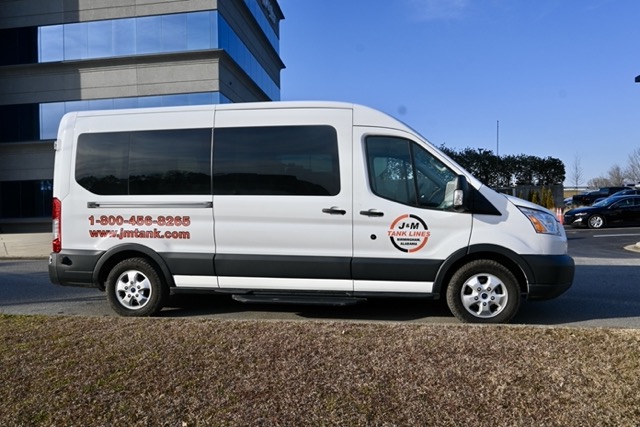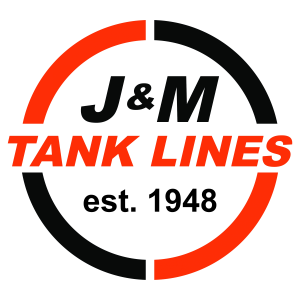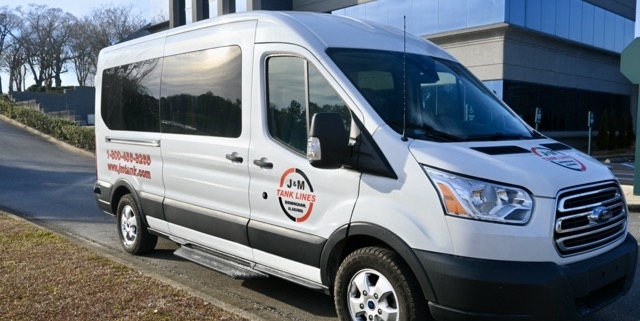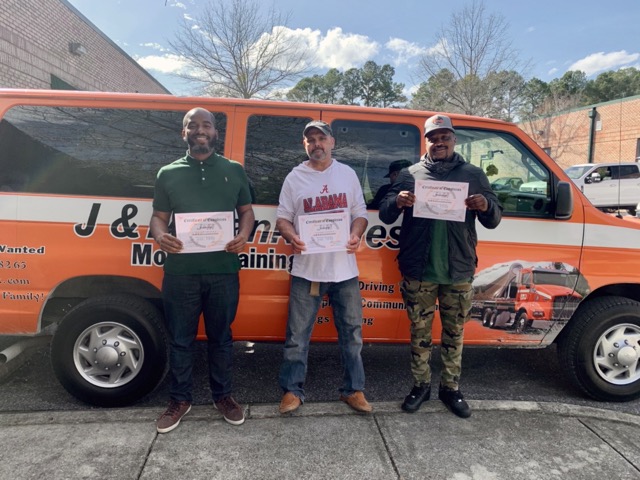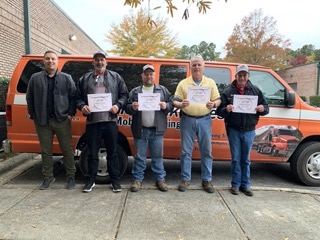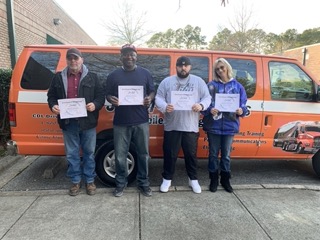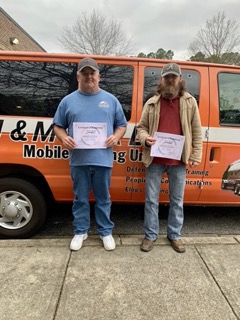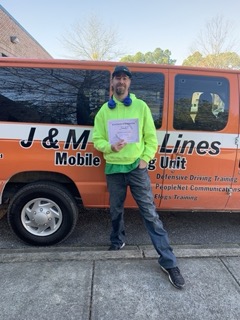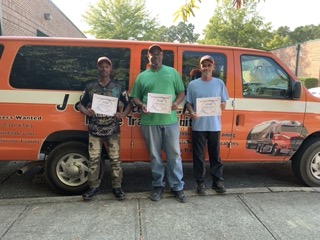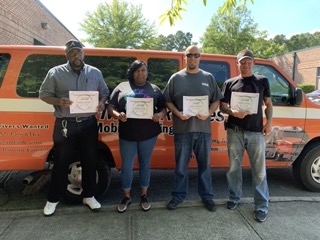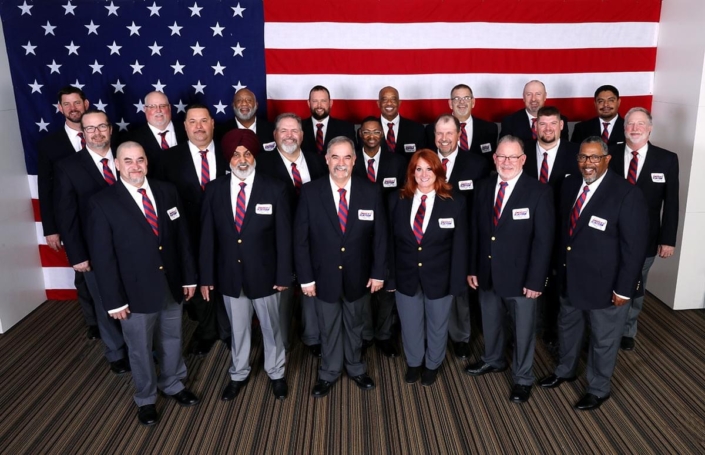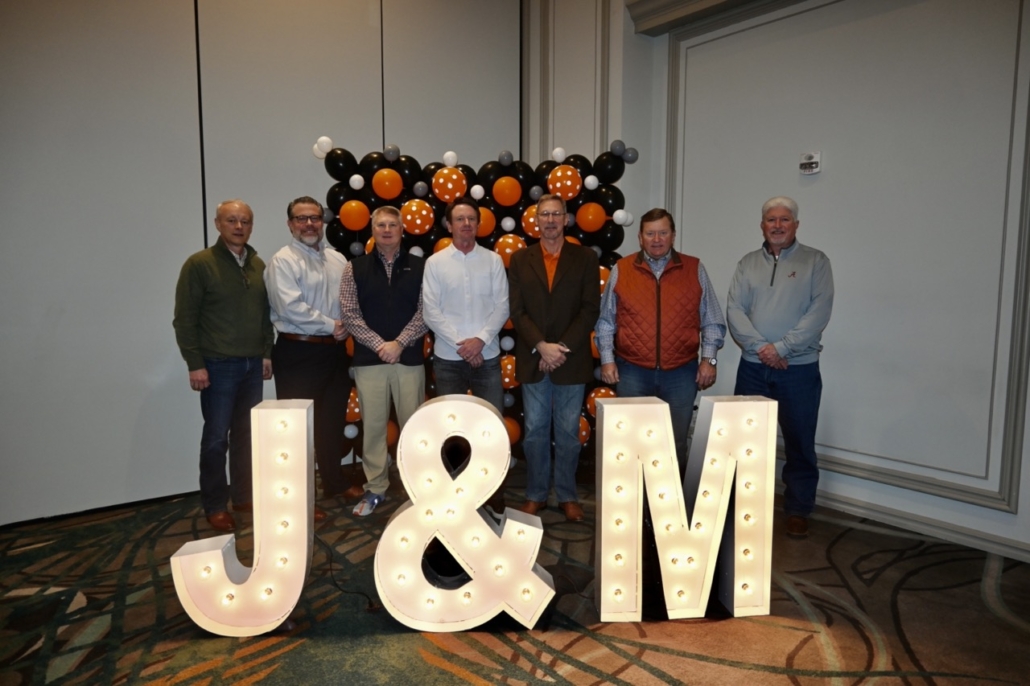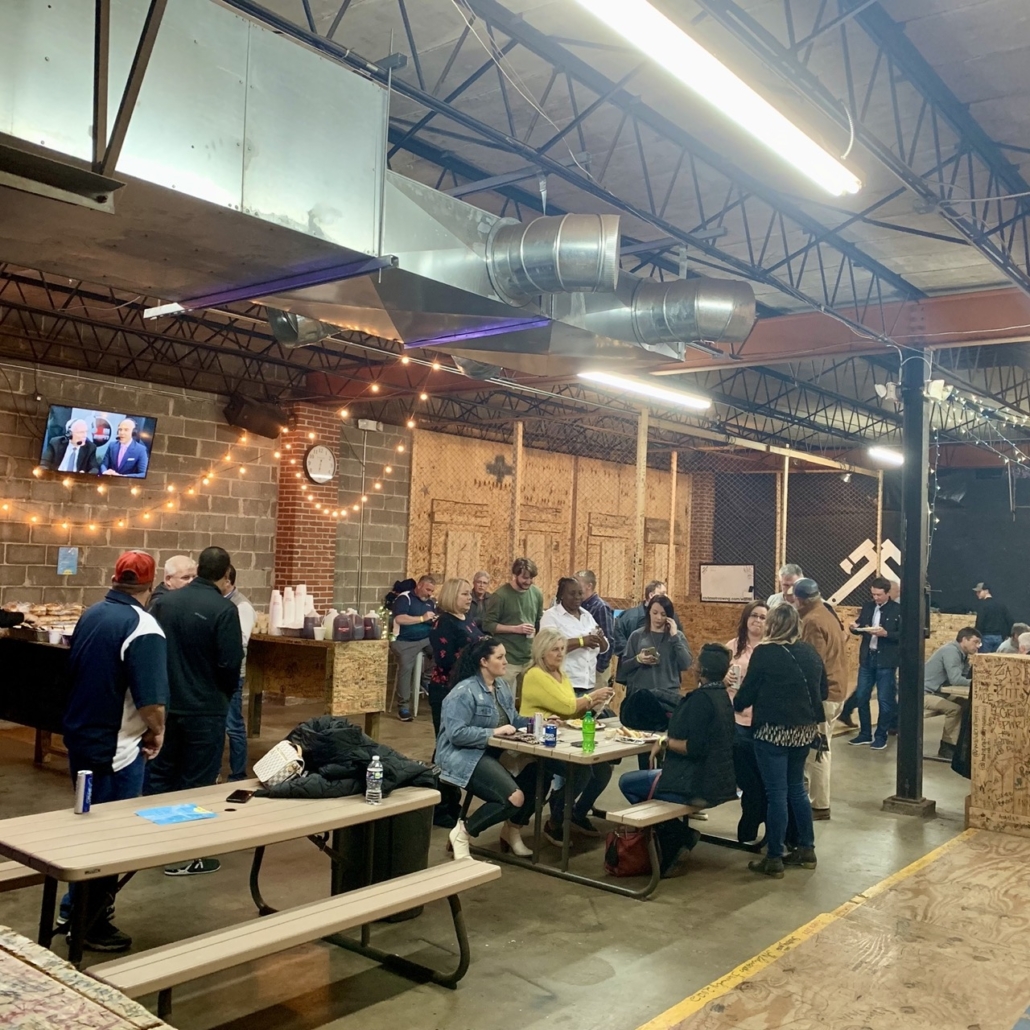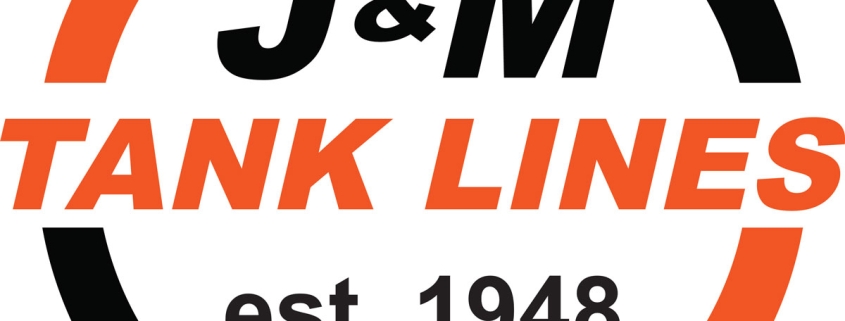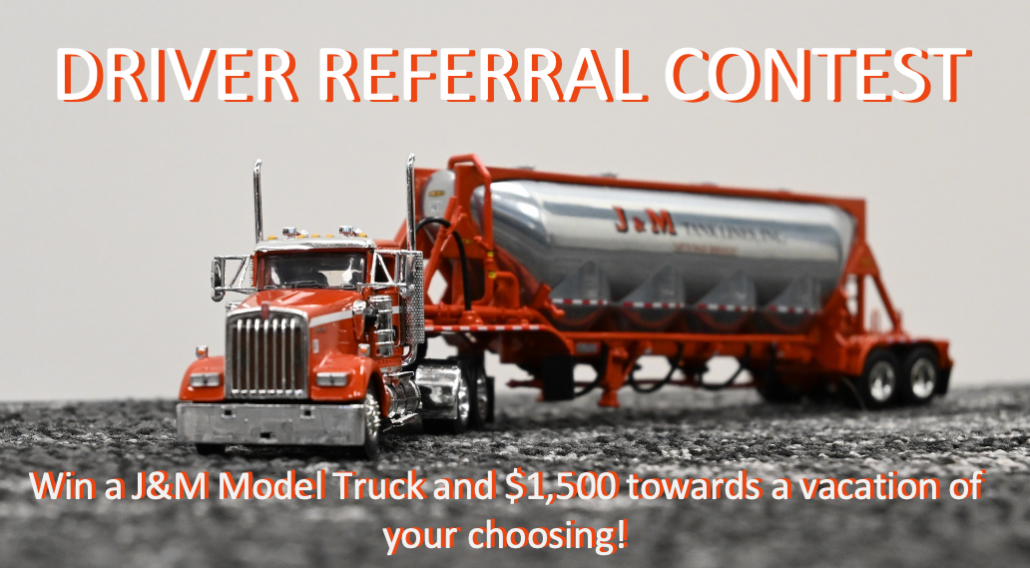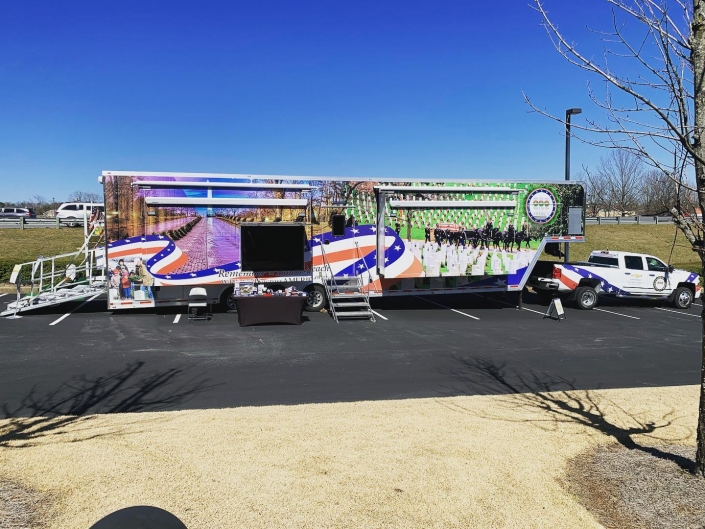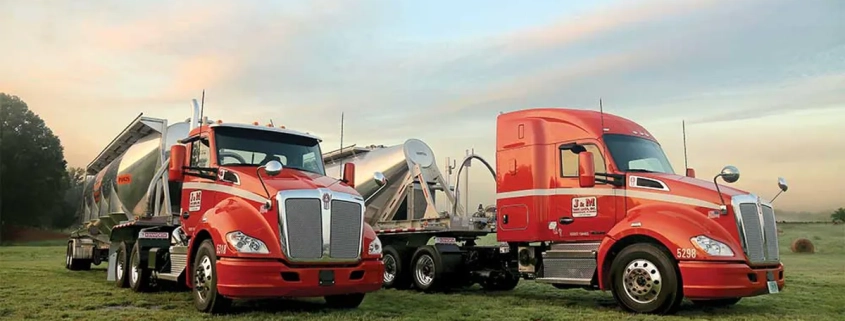This story was written and originally published by Bulk Transporter magazine in 2018.
Now in its 70th year, J&M Tank Lines planning on more growth and expansion | Bulk Transporter
OVER the course of its 70-year history, J&M Tank Lines Inc has experienced plenty of change. The company that exists today reflects a steady process of transition and evolution.
The management team continues to make the adjustments needed to ensure that the Birmingham, Alabama-based tank truck carrier is on the right track for continued success. J&M Tank Lines expects to generate gross revenues of roughly $75 million in 2018 and management has targeted $85 million in gross revenues in 2019.
“We’re busier than ever,” says Peter Sumerford, president of J&M Tank Lines. “We’ll haul about 110,000 loads in 2018. We’ve been diversifying our range of cargoes to include plastic pellets and a wider range of foodgrade products. We’ve opened terminals in the Chicago area and Baltimore area. We now have sales representatives in Chicago, Illinois; Atlanta, Georgia; Charlotte, North Carolina; and Dallas, Texas.
“While we are focused on expanding our geographic footprint and cargo range, we haven’t forgotten the foundation accounts and commodities that built our company. Our longest active account has been with us 52 years. Of our top 25 revenue accounts, 16 joined us more than 25 years ago and four are 15-plus-year accounts. We enter every new customer relationship thinking in the long term.”
Harold Sumerford Jr, chairman of J&M Tank Lines, adds: “To help with retention and recruiting, we rolled out a new driver compensation package based on a per mile/per ton that has boosted pay by more than 25% in some cases. We’re investing more in fleet upgrades. We bought 84 new tractors in 2018, and we will buy another 118 in 2019. We also bought around 90 new trailers.
“We’re relatively optimistic about the next year or so. We’re seeing a lot of positive economic signs. For instance roofing material plants are building inventory at a rapid rate, and we view these companies as a good economic barometer. All indications are that the strong economy should continue for at least the next nine months.”
Market changes
J&M Tank Lines has seen plenty of economic shifts over the course of its 70-year history. Most importantly, the trucking company has been able to successfully adapt to the market changes.
A $125 bank loan financed the start up of J&M Trucking Company in 1948. The company founder—Jimmie McClinton—based the one-truck operation on Montgomery, Alabama. Until the mid-1960s, baled cotton was the main commodity transported by J&M Trucking. The company eventually became the largest hauler of baled cotton in the United States.
In 1952, McClinton brought three partners into the business—Buck Jackson, Wingate Jackson, and Bill Jackson—and the trucking company grew steadily. In 1953, they purchased H B Trucking Company in Americus, Georgia, and McClinton and Buck Jackson moved to Americus. By then, J&M Trucking was hauling peanuts, as well as baled cotton.
Harold A Sumerford Sr joined the operation in 1961 as bookkeeper and assistant manager of the company’s cotton warehouse.
J&M Trucking obtained its first Interstate Commerce Commission (ICC) authority in 1962 to haul salt from Louisiana to the Southeast. A very prosperous endeavor for many years, this was the beginning of many operating authorities from the ICC.
Early acquisitions
Another key acquisition came in 1964 with the purchase of Har-Pen Trucking in Milledgeville, Georgia. This put J&M Trucking into the transport of clay pipe, which the carrier hauled all over the eastern part of the United States.
“At the same time, we also started hauling bulk and bagged cement from Atlanta,” Harold Sumerford Jr says. “We were in the right place at the right time for hauling construction materials. Florida was a big destination for the shipments.”
The first dry bulk trailer for cement was added to the fleet in 1966. That same year, Harold Sumerford Sr and the main offices of the company relocated to Milledgeville. The hunt for fleet acquisitions—both carriers and ICC authority–continued. During this time, McClinton and Harold Sumerford Sr bought out the other partners.
By then, J&M Trucking had grown its increasingly diversified operation to 700 company-owned tractors and was posting roughly $40 million in annual gross revenues. The operation included flatbed, van, and tank trailers.
Melvin Collins joined J&M Transportation Company in the 1970s, and served as general manager from 1976 to 1986. From there, he went on to found Southeastern Pneumatic, a tank trailer and equipment distributor.
Tank division
Liquid and dry bulk transport activity had grown enough by 1979 that the tank division of J&M Transportation was established. J&M Tank Lines was officially launched in 1980 and began operating with 60 trucks.
1982 brought a strategic shift for the company. McClinton had died in 1981, and Harold Sumerford Sr bought the stock of J&M Tank Lines from the McClinton Estate, giving him 100% ownership. The flatbed and van portion of the company was sold to Builders Transport, Savannah, Georgia.
However, it wasn’t long before the flatbeds were back. Harold Sumerford Sr purchased Ragsdale Truck Line Inc, Birmingham, Alabama, in 1985. Ragsdale was a flatbed operator that also had dry bulk authority, which allowed J&M Tank Lines to expand into Alabama with dry bulk trailers.
The company launched refrigerated trucking company Coldway Carriers Inc in 1987 in Ocala, Florida. This fleet primarily hauled juice from Florida to the Midwest. Boxed beef accounted for most of the backhauls.
In 1988, J&M purchased Fox Transport Inc, a Chattanooga, Tennessee, regional transporter of liquid asphalt and dry bulk products. That same year, the company purchased the assets of Wilson Freight Lines, a flatbed carrier in Savannah, Georgia. That company was merged with Ragsdale, which enabled J&M to double its presence in Savannah. The combined operation was called J&M Transport.
In 1995, J&M established a new division hauling liquid foodgrade commodities throughout the United States. It was based in Ocala, Florida with the refrigerated fleet.
By the start of the 21st Century, J&M Tank Lines was running approximately 550 tractors. Cargoes were as diverse as ever, and the carrier was operating vans, liquid tanks, refrigerated trailers, flatbeds, and pneumatic dry bulkers.
In June 2002, Harold Sumerford Sr announced he was retiring and planned to turn the business over to his sons Harold Jr (who had joined the company in 1978) and Peter (who came on board in 1989). The brothers decided to focus on the most profitable part of the business—pneumatic tanks—and divest the rest. Over the next six months, other operations—refrigerated, flatbed, and liquid tanks—were sold or liquidated.
Following the consolidation and restructuring, J&M Tank Lines was operating 220 tractors and 300 trailers. The primary commodity hauled was calcium carbonate from mines in Georgia and Alabama.
By 2004, the carrier had begun hauling some dry bulk foodgrade commodities—specifically flour from terminals in Georgia and Alabama. Forty-two tractors and trailers were dedicated to the operation.
Westward shift
J&M Tank Lines began a western expansion in 2007 with the opening of its first terminal west of the Mississippi River with the opening of a terminal in Marble Falls, Texas. Twenty-two transports based at the facility served calcium carbonate customers primarily in Texas and Oklahoma.
A year later, the corporate headquarters was moved from Americus, Georgia, to Birmingham, Alabama. “This move meant our headquarters was now more geographically centered,” Peter Sumerford says.
Over the last few years, J&M Tank Lines has reentered cement hauling and non-hazardous and hazardous liquid transport. The carrier now has 45 pneumatic trailers hauling plastic pellets, and frac sand is being hauled in Texas.
Throughout the decades, the Sumerfords have been very engaged in industry organizations at the state and national levels. Harold Sr and Harold Jr served as chairman of National Tank Truck Carriers, and Harold Jr will become American Trucking Associations chairman in 2021. Currently he is ATA vice-chairman. Peter currently serves as vice-chairman of the Georgia Motor Trucking Association and will become chairman in 2019.
Geographic focus
Today, J&M Tank Lines operates approximately 450 tractors, 550 pneumatic dry bulkers, 50 tank trailers, a handful of flatbeds and vans dispersed among 15 terminals. Regional hauls averaging 178 miles fleet-wide predominate, and most operations are conducted in the eastern half of the United States, with a primary focus on the Southeast and Gulf Coast.
“Our longest runs are around 1,000 miles,” Peter Sumerford says. “A majority of our drivers are out and back daily. A four-day circuit would be the longest single stretch on the road for any of our drivers.”
Fleet operations are managed with Trimble’s TMW Suite and TMT software systems, which the carrier has been using since 2002. The carrier also has specified PeopleNet on-board computers since 2006 and has run e-logs since 2009.
The carrier runs 98% Kenworth company tractors, with the newest models being T680s. Sixty-percent have sleepers. Tractors based in the Southeast are specified with PACCAR MX-13 engines rated at 450 horsepower. In the western side of the operation, company tractors are spec’d with the Cummins X15 rated for 550 horsepower. All of the tractors come with the Eaton Advantage automated transmission.
“Tractors used in Texas have a better resale value with the higher horsepower Cummins engine,” Harold Sumerford Jr says.
Safety systems include the Bendix Wingman Fusion package with active cruise control with braking features, along with collision mitigation technology. AutoVue is a vision-based system that detects when a commercial vehicle begins to drift toward an unintended lane change and alerts the driver. BlindSpotter is a side-radar system designed to alert drivers to vehicles or objects in adjacent lanes. A forward-looking video camera also is part of the system.
J&M Tank Lines also takes advantage of Bendix’s web portal, SafetyDirect. Linked to onboard safety technologies, the system wirelessly and automatically—via an onboard telematics system—transmits real-time driver performance data and event-based information to the fleet’s back office for analysis by fleet safety personnel. The information transmitted includes recorded video taken from the AutoVue camera. The resulting reports can help a fleet develop more targeted driver support, reward, and training programs.
Tractors and trailers are specified with air disc brakes. Bridgestone tires are the choice for replacement. The carrier runs wide-base tires in the drive and trailer positions on equipment in the southeast and duals in the western region.
Product handling equipment includes Gardner Denver blowers with power supplied through Chelsea PTOs. Southeastern Pneumatic supplies the blowers.
Dry bulk trailers range in capacity from 1,000 to 2,400 cu ft and are built by J&L Tank and Tremcar. Tremcar also manufactures the sanitary tank trailers used to transport sweeteners and edible oils. The newest trailers have Bendix roll stability, Hendrickson Intraax axle/suspensions, and Meritor Tire Inflation by PSI.
Driver program
Keeping the fleet busy requires a solid strategy for driver recruiting and retention. To that end, J&M Tank Lines recently implemented a new driver compensation package with pay on a per-mile/per-ton basis. Safety bonuses are now on a per-mile base, and drivers receive a percentage of the bonus in their weekly pay, with the remainder paid quarterly. The carrier now pays loyalty bonus calculated on length of tenure.
“We believe the changes in the driver compensation package will have a positive impact on safety, as well as driver retention,” says Dave Edmonson, J&M Tank Lines vice-president of safety and compliance. “Drivers have responded well to the new program, and they see it as a positive.
“In every way practical, we want to foster a family environment. We believe that is a key element in driver morale and retention. We promote good communication through an open-door policy with our top executives.”
J&M Tank Lines focuses on experienced tractor-trailer drivers with no vehicle accidents in the past 36 months and a clean criminal history. Drivers selected by the carrier typically are in their mid-30s to 40s.
New hires start with a one-week orientation at the Sylacauga, Alabama terminal that includes time on the company’s dry-bulk transfer simulator. Next comes one to two weeks with a driver trainer.
“We have at least one driver trainer at each terminal,” Edmonson says. “Throughout the training, we make sure drivers understand our expectations. We’re even producing a video that gives a look at a day in the life of a J&M Tank Lines driver.
Edmonson is working with Eric Hanson, J&M Tank Lines’ vice-president of H R development, to revamp the training and safety programs. As the company grows, we need a more formal training program that includes on-line instruction. We are working with Vertical Alliance to develop customized training videos on equipment such as pumps and blowers.
“Training isn’t just for drivers. We’re also developing in-house training for dispatchers and other company employees. We’re putting our dispatchers through the driver orientation, and we are encouraging them to participate in ride-alongs with drivers.
“We’re getting families involved in the driver training and safety effort. We’re giving them access to on-line training as a way to help encourage driver buy-in to the program.”
At all levels, the carrier is promoting a growth-oriented strategy for the future. Peter Sumerford says the carrier pursuing growth through acquisitions, as well as internal growth opportunities. Harold Sumerford Jr adds that the current goal of $100 million in revenues is well within reach.
